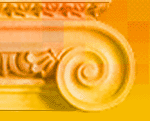|
Monet, the Impressionists, and the Study of Light
|
 |
 |
 |
Bopegedera, A. M. R. P. (2005). The art and science
of light: An interdisciplinary teaching and learning
experience.
Journal of Chemical Education, 82(1), 55-59.
The author discusses an interdisciplinary unit of a
course designed
with the help of a visual artist from
Evergreen State College. A group of 50 junior and
senior level students, all
art majors, enrolled in the
course. The author, a chemistry teacher, worked with
them on a unit studying light to
see the differences
between how artists and scientists understand light:
“Although seemingly disparate, art
and science have
much in common. Both disciplines require careful
observation, contemplation, record keeping, attention
to detail and, in the 21st century, use of advanced
technology” (p. 55). This quote indicates that the author
approached the unit with an open mind, recognizing
the essential similarities in the disciplines of study. This
would make it easier for him to note any differences.
The faculty and students involved in this interdisciplinary
unit were immersed in their study for a significant period
of time. A series of skill development art workshops were
paired with science laboratory experiments exploring
parallel aspects of light and color. Seminar discussions
were
built into the class structure to allow greater
depth of conversation and to explore more deeply the
art and science
connections. To aid the novice reader
in seeing how such a class might work, Bopegedera
presents a sample laboratory
as part of this research
article. In his conclusion, this longtime chemistry teacher
acknowledged not only the success
of combining art and
science for the students in the experiment but also the
lasting impact that this research has
had on his teaching. From: Gail Burnaford, Ph.D. with Sally Brown, James Doherty & H.
James McLaughlin
Arts Integration
Frameworks, Research Practice »
A Literature Review
&
A
Literature Review » April 2007
Gail Burnaford, Ph.D. with Sally Brown, James Doherty & H. James McLaughlin
Arts Integration
Frameworks, Research & Practice
|
 |
 |
 |
|
Fisher, D., & McDonald, N. (2004). Stormy weather:
Leading purposeful curriculum integration with and
through
the arts. Teaching Artist Journal, 2(4), 240-248.
The authors provide a hands-on guide through the
development of
an arts integration unit with elementary
school children. The unit combined the science of
weather by learning about
storms, music by examining
songs with storm or weather themes, and art and music
to move and express the feeling
generated by storms.
Additionally, they provide a glimpse of the motivation
to do so with teachers and a school
where integration is
not the norm.
Fisher and McDonald note that they do not aim to
dilute the content of the
arts or of the core curriculum
in the school. Rather, they present one concrete
example to demonstrate their view
that meaningful
integration deepens both curricular content knowledge
and appreciation of the arts.
|
 |
|
Enter content here
|
|

